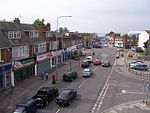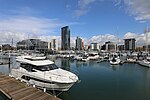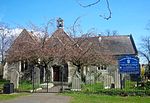John I. Thornycroft & Company

John I. Thornycroft & Company Limited, usually known simply as Thornycroft was a British shipbuilding firm founded by John Isaac Thornycroft in Chiswick in 1866. It moved to Woolston, Southampton, in 1908, merging in 1966 with Vosper & Company to form one organisation called Vosper Thornycroft. From 2002 to 2010 the company acquired several international and US based defence and services companies, and changed name to the VT Group. In 2008 VT's UK shipbuilding and support operations were merged with those of BAE Systems to create BVT Surface Fleet. In 2010 remaining parts of the company were absorbed by Babcock International who retained the UK and international operations, but sold the US based operations to the American Jordan Company, who took the name VT Group.
Excerpt from the Wikipedia article John I. Thornycroft & Company (License: CC BY-SA 3.0, Authors, Images).John I. Thornycroft & Company
John Thorneycroft Road, Southampton Woolston
Geographical coordinates (GPS) Address Nearby Places Show on map
Geographical coordinates (GPS)
| Latitude | Longitude |
|---|---|
| N 50.8954 ° | E -1.3824333333333 ° |
Address
Austen Heights Centenary Plaza
John Thorneycroft Road 1-42
SO19 9UE Southampton, Woolston
England, United Kingdom
Open on Google Maps








